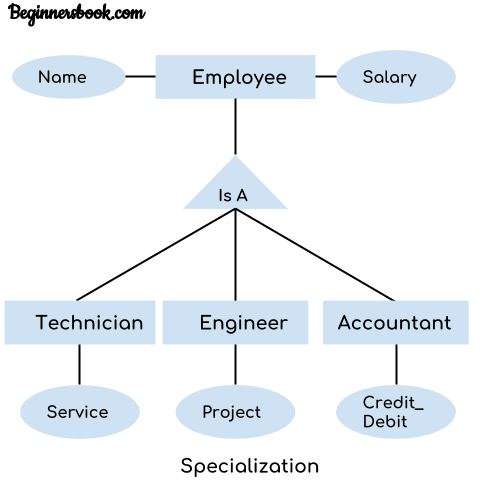Specialization is a process in which an entity is divided into sub-entities. You can think of it as a reverse process of generalization, in generalization two entities combine together to form a new higher level entity. Specialization is a top-down process.
The idea behind Specialization is to find the subsets of entities that have few distinguish attributes. For example – Consider an entity employee which can be further classified as sub-entities Technician, Engineer & Accountant because these sub entities have some distinguish attributes.
Specialization Example

In the above diagram, we can see that we have a higher level entity “Employee” which we have divided in sub entities “Technician”, “Engineer” & “Accountant”. All of these are just an employee of a company, however their role is completely different and they have few different attributes. Just for the example, I have shown that Technician handles service requests, Engineer works on a project and Accountant handles the credit & debit details. All of these three employee types have few attributes common such as name & salary which we had left associated with the parent entity “Employee” as shown in the above diagram.
Manoj Kumar Dewangan says
I am really very thankful to the author of this website. Really it helps me alot to prepare for my university examination as well as clear the concept of many things which was too much difficult for me.
Gopal says
I understand specialization concept with you help
Krishna sree says
Very Nice and Crystal clear information about DBMS , Thank you very much .
Aarya says
Thank you so much for all the extra efforts you make to help us grow.